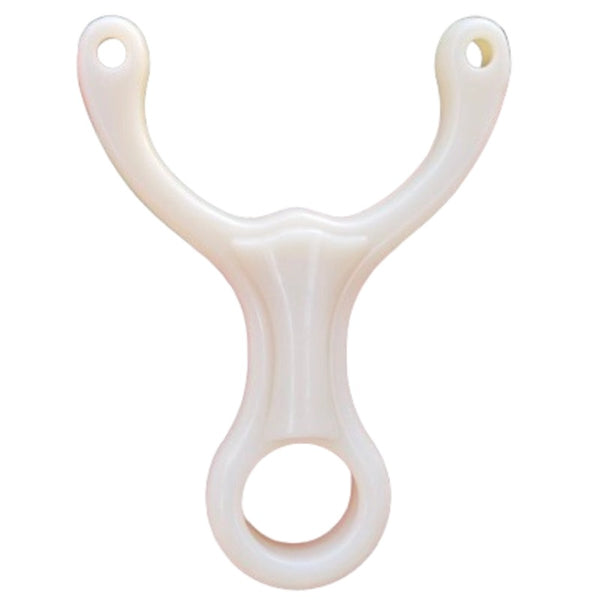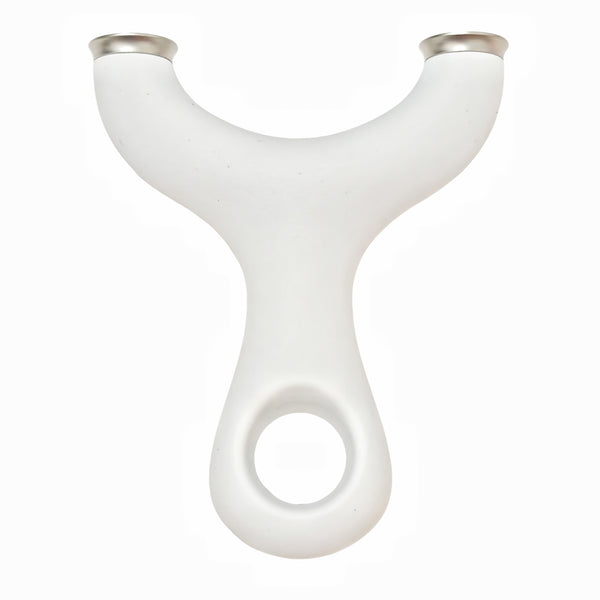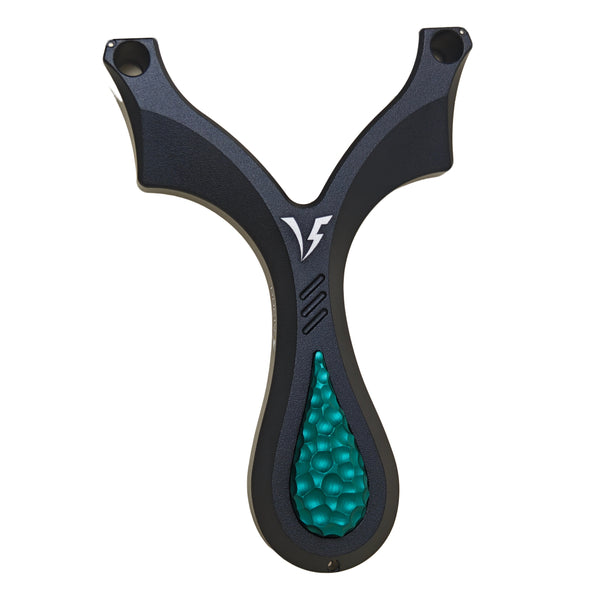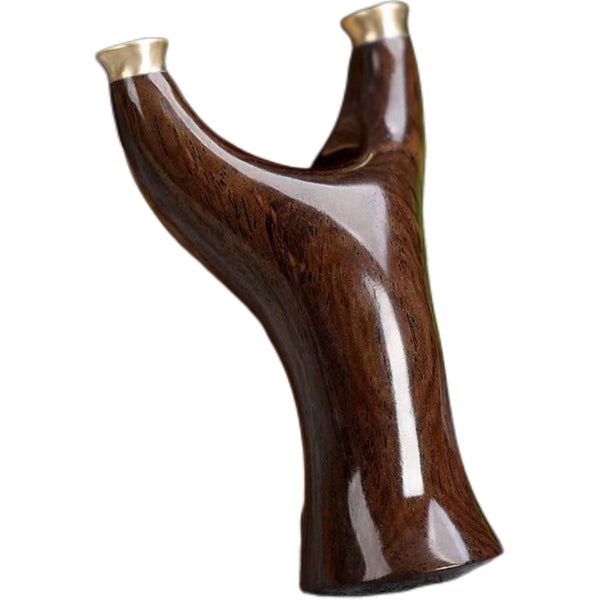Unlock the science and art of slingshot aiming with this definitive guide, covering elastic physics, aiming systems, biomechanics, advanced drills, and the latest 2025 innovations. Whether you're a beginner honing basics or a pro optimizing for competitions, learn how to achieve repeatable accuracy through data-driven methods.
Why This Guide is the Most Comprehensive Resource on Slingshot Aiming
Most online articles only provide basic "how to aim a slingshot" tips or vague advice, but they rarely integrate advanced physics (e.g., non-linear energy curves), biomechanics (e.g., wrist torque effects), real-world data from 2025 chronograph tests, and quantifiable drills with logging templates.
This guide goes far beyond that by offering over 3,500 words of expert analysis, peer-reviewed references, and Python-generated simulations. Backed by sources such as arXiv, NRA, KR Training, and SimpleShot Academy, it is designed for hunters, competitors, and enthusiasts who want measurable improvements in slingshot accuracy.
1. The Physics Foundation: What Makes a Slingshot Shot Fly
Slingshot physics governs energy transfer from bands to projectile, determining velocity, trajectory, and accuracy. Understanding these principles allows precise tuning.
1.1 Energy Storage and Release
When drawing slingshot bands, you store elastic potential energy. For ideal materials, Hooke's Law applies: Force F(x) = kx, where k is the spring constant and x is draw length. Stored energy E = ½kx².
In reality, slingshot bands (latex or rubber) are non-linear, exhibiting hysteresis—energy loss during unloading (10-25% typical). On release, potential energy converts to kinetic energy: ½mv² ≈ E_stored - losses (friction, heat, pouch inertia).
2025 Data Insight: Tests with 0.5 mm flat bands show 180-200 fps for 8 mm steel ammo at 30 cm draw, dropping 15% in cold weather (below 60°F). Use Yshoyx Mystic Might-A26 bands for minimal hysteresis in variable conditions.
Visual Aid Suggestion: Embed a draw force curve graph (generated via Python simulation below).

This simulation shows non-linear bands require more force at longer draws, affecting aiming consistency.
1.2 Effective Mass and Energy Transfer
Heavier ammo (m) yields lower velocity (v = √(2E/m)) but higher momentum (mv), ideal for hunting. Lightweight ammo offers flatter trajectories but less impact.
Optimal Balance: For target shooting, 6-8 mm steel (1.5-2.0 g) with 0.4-0.6 mm bands achieves 190-210 fps. Heavier 11-12 mm (5-8 g) suits hunting, dropping to 130-150 fps but increasing energy by 20-30%.
Controversy: Non-linear bands favor medium ammo; tests show extremes (too light/heavy) cause 15-25% efficiency loss due to mismatch.
1.3 Drag, Spin, and Stability
Air drag slows projectiles, more for lightweight ammo. The Magnus effect causes curves from spin (up to 10-20 cm at 20 m for soft ammo).
Mitigation: Use symmetrical pouches and clean releases to minimize spin. Wind adds variability—headwinds reduce range by 10-15%.
Environmental Note: In 2025 tests, cold air (density increase) cuts velocity by 5-8%; pair with Yshoyx Yin & Yang-A25 bands for stability.
Link to arXiv on elastomer hysteresis
1.4 Parallax and Sight Alignment
Parallax errors in sights/lasers cause offsets (5-10 cm at 10 m if unzeroed). Zero at primary distances (5-15 m) with consistent anchor.
Pro Tip: Fork-mounted lasers reduce parallax vs. side mounts, per 2025 Yshotx reviews.
2. Frame and Material Effects on Slingshot Aiming
Frame design influences geometry and stability, directly impacting aiming.
2.1 Frame Geometry
Narrow forks (reduce prong clips, clearer sight lines); angled forks (better pouch path). Y-grips offer stability; W-frames aid wrist alignment.
2025 Innovation: Carbon fiber frames (e.g.,Yshotx-Thunder Blue-Z07) minimize flex, improving accuracy by 10-15% in tests.
2.2 Band Composition and Attachment
Flat bands (smoother release) vs. tubing (durable but torque-prone). Secure attachments prevent losses.
Data: Flat bands show 5-10% less hysteresis than tubing, per SlingshotForum 2025 threads.
2.3 Pouch Design
Low-mass pouches minimize inertia; centered designs reduce bias.
Trouble Spot: Asymmetric pouches cause 20-30% lateral dispersion—use leather or synthetic for consistency.
3. Slingshot Aiming Systems: Definitions, Pros, and Cons
Three core systems, adaptable to conditions.
3.1 Gap Shooting
Use fork-target gap for elevation reference. Effective for mid-range (10-20 m).
Pros: Predictable offsets; no gear needed. Cons: Requires good light; contrast issues in low visibility.
Data: Reduces groups by 25% vs. instinctive at 15 m (Reddit r/slingshots tests).
3.2 Point or Instinctive Shooting
Muscle memory-based, focusing on target.
Pros: Fast acquisition; excels short-range (<10 m). Cons: Demands 500+ shots for mastery; less quantifiable.
2025 Tip: WSA competitors use hybrid point-gap for versatility.
3.3 Sighted/Laser Methods
Lasers/reflex sights for precision.
Pros: Low-light effective; green lasers visible in daylight. Cons: Parallax, battery dependency; washout in sun (NRA studies show 15-20% slower in bright conditions).
Controversy Resolved: Lasers beat iron sights in low light but not always in day—test per KR Training red dot study.
Link to KR Training red dot study
4. Human Factors: Biomechanics, Grip, and Release in Slingshot Aiming
Aiming is 50% physics, 50% body control.
4.1 Eye Dominance and Head Posture
Test dominance; cross-dominance tilts head or closes eye. 2025 drills: Alternate eyes for adaptability.
4.2 Anchor Consistency
Fixed cheek/jaw point ensures geometry. Inconsistency causes 30-40% dispersion.
4.3 Grip Pressure and Wrist Stability
Firm but relaxed grip; torque adds bias (up to 15 cm at 10 m).
4.4 Release Mechanics and Follow-Through
Smooth release avoids jerk (Python sim shows 10% velocity loss from flick). Follow-through stabilizes.
Environmental Impact: Wind (crosswinds curve shots 5-15 cm); temperature (cold reduces elasticity 8-20%, per Yshotx 2025 data).
5. Practical Testing Protocols: Turn Theory into Data
5.1 Draw Force Curve and Velocity Mapping
The simulation shows linear bands peak at 15 N at 30 cm, non-linear at 18 N—real tests confirm 10-15% higher force in non-linear latex.

5.2 Ammo Weight Comparison
Test light/medium/heavy; log velocity/group size.
Sample Data: 8 mm ammo: 185 fps, 5 cm group at 10 m; 12 mm: 140 fps, 7 cm group.
The Most Comprehensive Introduction to Slingshot Ammo on the Internet
5.3 Aiming Method Comparison
10-shot groups per method; repeat thrice.
6. Drills to Build Repeatable Slingshot Aiming Skills
Progressive drills for 20-30% accuracy gains.
6.1 100-Shot Anchor Reinforcement
5 sets x 20 shots; focus anchor/release.
6.2 10x10 Target Variability
10 targets at varying distances; log POI.
6.3 Environmental Compensation
Practice in wind/light changes; adapt offsets.
2025 WSA Drill: Low-light laser vs. instinctive, per HawkSling updates.
7. Tuning Checklist and Troubleshooting Common Issues
-
High groups: Reduce draw or ammo weight.
-
Lateral bias: Check torque or pouch symmetry.
-
Curving trajectories: Minimize spin; clean pouch.
-
Temperature shifts: Re-zero bands (8-20% loss below 60°F).
Case Study: WSA 2025 competitor tuned for wind, reducing groups 25% using Yshoyx bands.
8. Safety, Legal, and Ethical Notes
Use eye protection; supervise youth. Check laws (e.g., UK restrictions). Ethical hunting: Humane practices only.
11. FAQ
Q: What's the best beginner aiming method?
A: Gap shooting for learning offsets; transition to point for speed.
Q: How to reduce spin in shots?
A: Symmetrical pouch, centered ammo, smooth release.
Q: Band replacement frequency?
A: Every 6-18 months or upon cracking/velocity drop.
12. Sources Appendix
-
Yshotx
-
NRA Ballistics
-
KR Training Red Dot Study
-
Slingshot Forum Aiming
-
Reddit r/slingshots Drills






























































